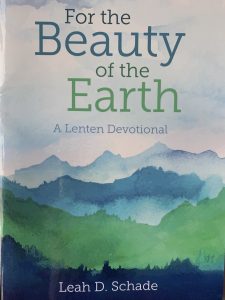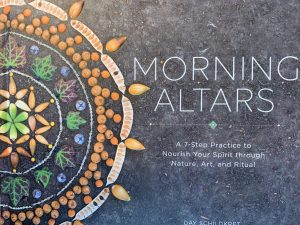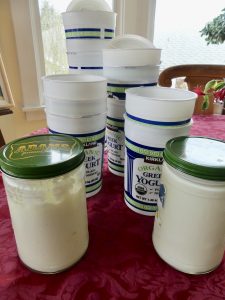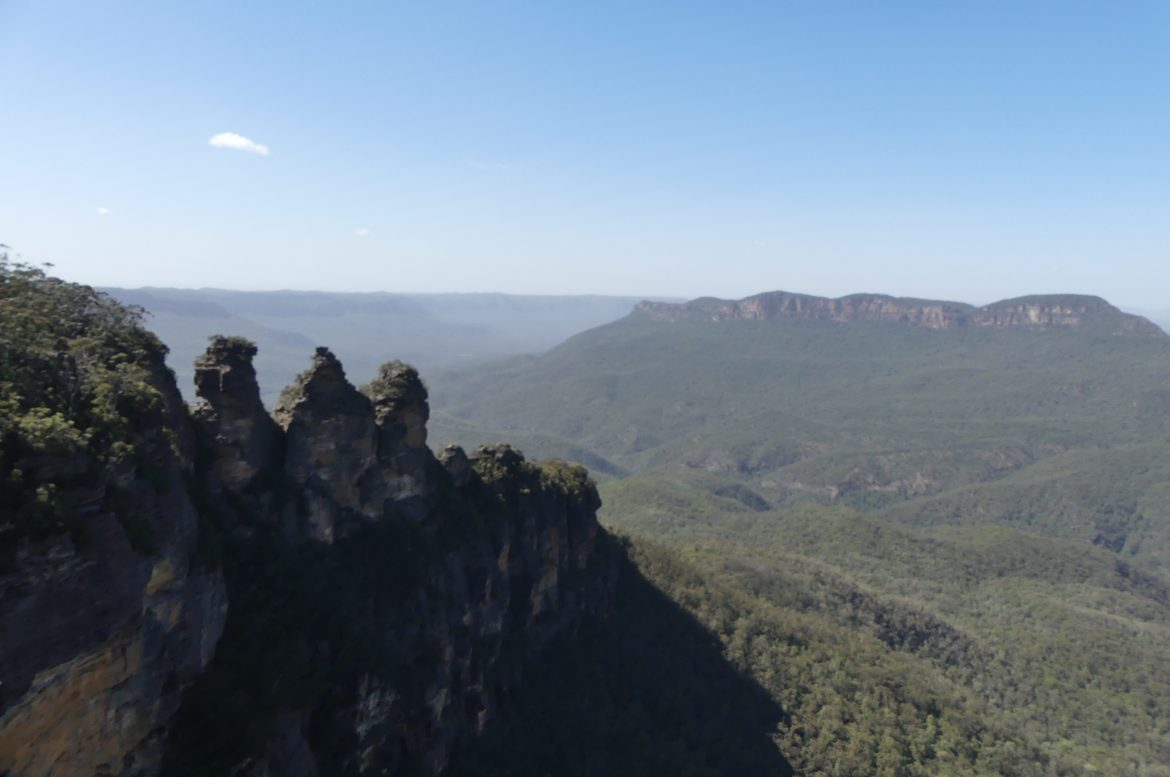by Christine Sine
I am a strong believer in our call to be creation keepers and earth stewards of this beautiful world in which God has placed us. I am delighted by it but also saddened by what is happening to it.
For the last month the focus of my morning prayer has been a barren garden dotted with seeds, feathers and dried out eucalyptus leaves – a stark reminder of the scorched earth of not just Australia but of so many parts of the world where God’s beautiful creation has been stripped away, polluted and destroyed. My heart aches as I read about the devastation from fires in Australia, flooding here in Seattle, earthquakes in Puerto Rico and droughts in Africa. Sea levels are rising and already threaten low lying island nations. Our world is in peril and as we head towards Lent this year I have been challenged to make this my focus and invite you to join me.
 Part of what convicted me was the gift of For the Beauty of the Earth from Chalice press which I plan to use this year as my Lenten devotional. Second was the reminder that on April 22 we will celebrate the 50th anniversary of Earth Day and as you can imagine it has started me thinking about what I already do, small though it may be, to fulfill my role as a creation keeper and what more I could do. My third stimulus was reading that the Archbishop of Canterbury is challenging Anglicans around the world to celebrate a Green Lent. Then I looked at the pile of books I am putting together for a new writing project on restoring the rhythms and seasons of life and I knew this had to be my focus this year.
Part of what convicted me was the gift of For the Beauty of the Earth from Chalice press which I plan to use this year as my Lenten devotional. Second was the reminder that on April 22 we will celebrate the 50th anniversary of Earth Day and as you can imagine it has started me thinking about what I already do, small though it may be, to fulfill my role as a creation keeper and what more I could do. My third stimulus was reading that the Archbishop of Canterbury is challenging Anglicans around the world to celebrate a Green Lent. Then I looked at the pile of books I am putting together for a new writing project on restoring the rhythms and seasons of life and I knew this had to be my focus this year.
What a lot of rich resources there are out there. I have grabbed a few of the best for the Lenten season and thought that you might like to join me in this reading and in practices I am thinking about for Lent (and hoping that our small community will also participate in.) And if you wonder where to start look over this list on Green Lent by Dianne Sheper
Reading For Lent
 In his encyclical Laudato Si: On Care For Our Common Home, Pope Francis calls us to see that the unprecedented destruction of ecosystems we are visiting upon the earth is rooted in urgent spiritual and moral questions, and requires from us a spiritual and moral response. I think that Lent is a season for identifying with the poor and it seems to me that there is no better time to consider our impoverished earth and what we can do to bring back its beauty than this.
In his encyclical Laudato Si: On Care For Our Common Home, Pope Francis calls us to see that the unprecedented destruction of ecosystems we are visiting upon the earth is rooted in urgent spiritual and moral questions, and requires from us a spiritual and moral response. I think that Lent is a season for identifying with the poor and it seems to me that there is no better time to consider our impoverished earth and what we can do to bring back its beauty than this.
I am currently reading Spiritual Ecology: The Cry of the Earth a collection of essays on creation care from a variety of perspectives that I am finding both encouraging and convicting.
The signs of wonder are all around us, from the simple mystery of a sunrise to the laugh of a child. So too are the signs of desolation we have created – the rubbish we scatter on our streets, the toxins in our water, the species we have depleted. And amidst both the beauty and the desolation is the cry of the Earth, the suffering of this most generous being who gives us life and sustains us. (i)
The suffering of the earth is as real as the suffering of the poor on whom the burden of the crisis falls most heavily; we must (Pope Francis) tells us hear both the cry of the earth and the cry of the poor. The earth herself, burdened and laid waste, among the most abandoned and maltreated of our poor. (Spiritual Ecology (ii-iii)
At the same time I am skimming through Spiritual Ecology: 10 Practices to Awaken the Sacred in Everyday Life . This little book by Llewellyn Vaughan-Lee and Hilary Hart, the editors of the book above, has some great suggestions on practices that help to connect us to the earth and to the world around us – nothing beyond your reach – like walking and breathing exercises (You can probably see why I like this as these are practices I already do regularly).

Morning Altars
To contract some of these challenging books I am also reading Morning Altars: A 7 Step Practice to Nourish Your Spirit Through Nature, Art and Ritual. This is my most cherished and inspirational find of the last month. It not only has gorgeous photos in it, but spells out a wonderful reflective process for how to wonder, wonder, and create out of the natural world around us.
A few others I am leaving (at least trying to) until the beginning of Lent are:
Wild Hope: Stories for Lent from the Vanishing by Gail Boss and David Klein. This is one I have not looked at yet but it has been recommended by several friends.
From Nature to Creation: by Norman Wirzba who suggests Christians start by developing an imagination for the world as created, sustained and daily loved by God. If we call the earth a nature or the environment it loses it sacred presence – returning to the use of creation as a description of our glorious earth restores our sense of connected to God in and through it.
The Rebirthing of God by John Philip Newell in which we are encouraged to move back into relationship with everything else that is of God. I read this several years ago and realize it is time to revisit it.
God’s Good Earth: Praise and Prayer for Creation by Anne and Jeffery Rowthorn is a great resource for prayers and liturgies for creation care during this season.
This may sound like a lot of reading and you probably want to restrict yourself to one or two of these – For the Beauty of The Earth and Morning Altars would make great reading companions.
Spiritual Practices for Lent.
 A couple of years ago I posted these Ten Simple Ways to Help Heal The Land and Sustainability One Yoghurt Jar At a Time which I have just prayerfully re-read as I think about what I should do this year for Lent.
A couple of years ago I posted these Ten Simple Ways to Help Heal The Land and Sustainability One Yoghurt Jar At a Time which I have just prayerfully re-read as I think about what I should do this year for Lent.
Here is what I am hoping to institute the following practices for Lent:
- Be thankful and enjoy life – this advice from Chief Oren Lyons in Spiritual Ecology really resonated with me. The place we start in Lent is not with cutting back but with being thankful. “Thankfulness inspires respect” he says. If, each day we express thankfulness for one aspect of creation – the rising of the sun, the wind in our hair, the grace of birds in the air, the beauty of flowers and of passersby in the street, then our respect for creation grows. On top of that we realize how intimately connected to creation we are.
- A plant based diet. I remember several years ago when we were in Lebanon during Lent and had lunch with an Orthodox priest and his wife. They presented us with a lavish meal but restricted themselves to the traditional lenten diet of lentils, beans and rice. Tom and I are discussing how we can implement this at least partially during Lent (not planning to give up milk in my tea and coffee though)
- A carbon fast This free download gives some great ideas for a carbon fast. I plan to focus on one each week rather than one each day so that I don’t get overloaded.
- Seed planting. This is not really a new practice for me. We grow at least 50% of our own fruit and vegetables on our urban lot and Lent coincides with prime seed planting season in Seattle. Strangely I have never really made a conscious connection between these two practices – this year I plan to probably by planting tomato seeds inside at the beginning of Lent and greens outside at the end of Lent (still thinking about how this will be lived out)
- At least two car free days a week. We work at home so in some ways this is not difficult for us but again it is the conscious decision to walk, bike or take public transport that I need to instill into my thinking. We have three supermarkets within a mile of us. Walking rather than driving to these is an option, and possibly like my mother I need a wheeled shopping trolley to make that easier.
- Spring clean and refuse to use plastic where possible. Lent was traditionally a season of spring cleaning as a symbol of our inner need for cleaning and I think that getting rid of plastic as much as possible from our lives is one way to symbolize the change of thinking that we want to adhere too. And of course it is not just things like plastic bags, plastic storage containers, or plastic cutting boards that we need to think about getting rid of. Micro plastics are ubiquitous in our world and though the jury is still out on how harmful they are there are some concerning reports that we need to think about. And Microplastics occur in everything from tea bags to fleece garments and cosmetics. So it might be time to buy only natural fibers and cut back on cosmetics or research those that do not contain Microplastics.
As a community we are also thinking of some earth friendly practices that we have not yet instituted – solar power and rain wise gardens are some to consider. Our church recently installed rain wise gardens and water cisterns to
Last week we updated our Lenten and Easter resource lists and there are several other suggestions for creation keepers to consider during this season. Here are a few others that my not have made the list.
- Creation Care as a Hopeful Spiritual Practice for Lent Devotional by Lynne Baab is a great resource to consider
- Carbon fast
- Ten Simple Ways to Help Heal The Land
- Getting Rid of Plastic One Yoghurt Jar At a Time
What Is Your Response
What are you considering doing for Lent this year? How could you incorporate your care for creation into these practices?
More Resources for Lent and Easter
We also wanted to let you know that we have now updated all our Lent and Easter resources for 2020. There are general resources, ones for families with kids, music, suggested devotionals and a number of FREE resources. So check them out
NOTE: As an Amazon affiliate I receive a small amount for purchases made through appropriate links. Thank you for supporting Godspace in this way.


2 comments
Truly inspirational and wonderful challenges given that are so creative
Thank you Colleen